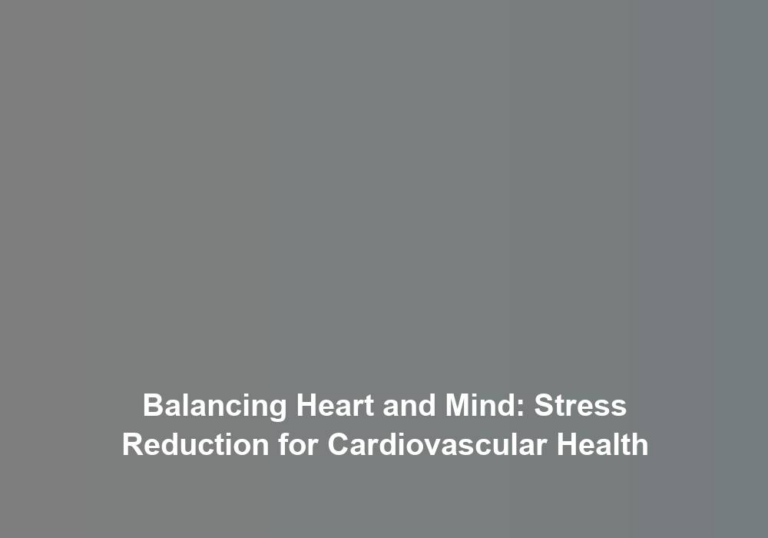The Power of Muscles: A Deep Dive into Muscle Function and Anatomy
You may not realize how intricate and powerful the network of muscles in your body truly is. From the way you walk and move to the subtle adjustments your body makes to maintain balance, muscles are the unsung heroes of your daily activities. But have you ever wondered about the mechanics behind the marvel of muscle function? Understanding the anatomy and function of muscles goes far beyond basic knowledge G?? it delves into a fascinating world of biology and physiology that directly impacts your everyday life. So, letG??s explore the remarkable power of muscles and how they contribute to your overall well-being.
The Basics of Muscle Structure
Understanding the basics of muscle structure is fundamental to comprehending the intricate mechanisms underlying muscle function and movement. Muscle composition refers to the makeup of muscles, which primarily comprises muscle fibers, connective tissue, blood vessels, and nerves. Muscle fibers are the basic units of a muscle and are composed of myofibrils, which consist of sarcomeres containing actin and myosin filaments. These filaments are responsible for muscle contractions, enabling movement.
Muscle development is a complex process involving myogenesis, which is the formation of muscular tissue. During embryonic development, myoblasts, the precursors to muscle cells, fuse to form multinucleated myotubes. These myotubes further mature into muscle fibers, contributing to the overall muscle structure. Understanding this process is crucial in comprehending muscle growth and repair throughout life.
From a scientific perspective, muscle composition and development are intricate processes that involve the coordination of various cellular and molecular events. The arrangement of muscle fibers, the distribution of connective tissue, and the innervation by nerves all play essential roles in determining the structure and function of a muscle. This level of detail provides a deeper insight into the complexity of muscle biology and helps to elucidate the mechanisms underlying muscle function and movement.
Understanding Muscle Contraction
Myofibrils within muscle fibers contain actin and myosin filaments, which play a crucial role in muscle contraction. Understanding muscle contraction involves delving into the intricate process of muscle physiology and the role of neuromuscular junctions. When your brain sends a signal to your muscle to contract, a series of events is set into motion. The signal travels down the motor neuron and reaches the neuromuscular junction, where a neurotransmitter called acetylcholine is released. This neurotransmitter binds to receptors on the muscle cell membrane, leading to the generation of an action potential that travels along the muscle fiber.
As the action potential spreads along the muscle fiber, it triggers the release of calcium ions from the sarcoplasmic reticulum. These calcium ions then bind to troponin, causing a conformational change in the actin-myosin complex. This change exposes the binding sites on the actin filaments, allowing the myosin heads to attach and form cross-bridges. The binding of myosin to actin initiates the power stroke, where the myosin heads pivot, pulling the actin filaments towards the center of the sarcomere. This process continues as long as calcium and ATP are available, resulting in muscle contraction.
Understanding the intricacies of muscle contraction provides valuable insight into the remarkable abilities of the human body. It showcases the remarkable coordination between the nervous system and muscle tissue, highlighting the incredible precision and efficiency of neuromuscular function.
Role of Muscles in Movement
The intricate coordination of muscles in human movement is a testament to the incredible precision and efficiency of neuromuscular function. Understanding the role of muscles in movement involves delving into the complex biomechanics analysis that underpins our ability to perform various physical activities. Here are four key aspects to consider:
-
Muscle Coordination: The orchestrated interplay between different muscle groups is essential for smooth and efficient movement. This coordination involves the activation and relaxation of specific muscles at precise moments to produce controlled and purposeful motions.
-
Biomechanics Analysis: By utilizing biomechanical principles, scientists and researchers can analyze the forces, torques, and energy transfers involved in muscle-driven movements. This in-depth analysis provides valuable insights into how muscles function in different contexts, such as walking, running, or lifting objects.
-
Functional Integration: Muscles do not work in isolation; they function as part of integrated systems within the body. Understanding how muscles integrate with bones, tendons, and ligaments is crucial for comprehending the mechanics of movement and the distribution of forces throughout the musculoskeletal system.
-
Motor Learning: The role of muscles in movement also encompasses the process of motor learning, which involves acquiring and refining motor skills through practice and experience. This aspect delves into how muscles adapt and improve their coordination and efficiency in response to repeated movements and physical training.
Muscle Fiber Types and Function
When it comes to muscle fiber types and function, itG??s essential to understand the distinct characteristics and roles of each type. These differences play a crucial role in your bodyG??s ability to perform various activities, from explosive movements to endurance activities. By examining the functional disparities between fiber types, you can gain valuable insights into how your muscles adapt and respond to different types of physical demands.
Fiber Types Overview
Understanding the different types of muscle fibers and their respective functions is essential for comprehending the overall capabilities and limitations of the muscular system. Muscle fibers can be broadly categorized into two main types: slow twitch (Type I) and fast twitch (Type II). These fiber types play a crucial role in muscle performance, athletic training, and overall physical abilities. HereG??s a brief overview of their characteristics:
- Slow twitch fibers are fatigue-resistant and primarily utilized during endurance activities such as long-distance running or cycling.
- Fast twitch fibers, on the other hand, are responsible for explosive movements and high-intensity activities like sprinting and weightlifting.
- While everyone has both fiber types, individuals with a higher proportion of fast twitch fibers may excel in activities requiring power and speed.
- Training regimens can influence the composition and performance of muscle fibers, allowing athletes to optimize their capabilities based on the demands of their sport.
Functional Differences Explained
Functional differences between muscle fiber types can significantly impact an individualG??s athletic performance and training regimen. As we age, there is a shift towards a higher proportion of fast-twitch muscle fibers, which are responsible for explosive movements. This transition often leads to a decline in muscle function, affecting power and speed. Understanding these changes can help tailor training programs to mitigate age-related decline in muscle performance. Additionally, muscle activation techniques play a crucial role in optimizing muscle fiber recruitment during exercise. Utilizing specific activation exercises can target both fast-twitch and slow-twitch muscle fibers, enhancing overall functional capacity. By incorporating a variety of training modalities that target different muscle fiber types, individuals can better maintain muscle function with age and optimize their athletic performance.
Muscle Function in Posture and Stability
Muscles play a crucial role in maintaining posture and stability by providing support and control for the bodyG??s movements and positions. The intricate interplay of various muscle groups contributes to your ability to stand, sit, and move with stability and balance. HereG??s a closer look at how muscles function in posture and stability:
-
Posture Control: Muscles such as the erector spinae in the back and the rectus abdominis in the abdomen work together to support the spine and maintain an upright posture. These muscles engage to prevent slouching and provide the necessary strength for keeping your body in alignment.
-
Stability Exercises: Engaging in exercises that target core, leg, and back muscles, such as planks, bridges, and squats, can significantly improve your overall stability. These exercises help strengthen the muscles responsible for posture and stability, leading to better body control.
-
Joint Stability: Muscles surrounding the joints, such as the rotator cuff muscles in the shoulders and the quadriceps and hamstrings around the knees, play a crucial role in stabilizing the joints. This stability is essential for performing daily activities and maintaining balance during movement.
-
Muscle Imbalance: Imbalances in muscle strength and flexibility can impact your posture and stability. Addressing these imbalances through targeted exercises and stretching routines can help improve overall stability and reduce the risk of injury.
Understanding the role of muscles in posture and stability can inspire you to engage in targeted exercises that enhance your bodyG??s support and control, ultimately leading to improved overall stability and reduced risk of musculoskeletal issues.
The Importance of Muscle Training
You know that muscle training is crucial for your overall well-being. It not only helps to increase muscle strength, but also enhances functional movement, allowing you to perform daily activities with ease. Additionally, engaging in muscle training plays a significant role in preventing injuries, thereby promoting a healthier and more active lifestyle.
Muscle Strength Benefits
Building muscle strength through targeted training exercises is essential for improving overall physical performance and preventing injury. Engaging in muscle training offers numerous benefits, including:
- Enhanced Metabolism: Increased muscle mass leads to a higher metabolic rate, aiding in weight management and overall health.
- Injury Prevention: Strengthening muscles helps to stabilize joints, reducing the risk of injury during physical activities.
- Improved Posture: Strong muscles provide better support for the spine, promoting good posture and reducing the likelihood of back pain.
- Enhanced Functional Abilities: Building muscle strength improves your ability to perform daily tasks, enhancing your overall quality of life and independence.
Functional Movement Enhancement
Enhancing functional movement through targeted muscle training exercises is crucial for optimizing physical performance and reducing the risk of injury. Mobility improvement and strength building are key components of functional movement enhancement. By engaging in exercises that target specific muscle groups, you can improve your overall mobility and build the strength necessary for efficient movement. Additionally, incorporating flexibility training into your workout routine is essential for movement optimization. Flexibility allows for a greater range of motion, enabling your muscles to work more effectively during various activities. When you focus on functional movement enhancement, you are not only improving your physical capabilities but also reducing the likelihood of experiencing musculoskeletal injuries. Prioritizing muscle training for functional movement enhancement is a strategic approach to enhancing your overall physical well-being and performance.
Injury Prevention Importance
Muscle training plays a critical role in preventing injuries and maintaining overall physical health and performance. To effectively prevent strains and other muscle-related injuries, itG??s essential to incorporate muscle maintenance strategies into your training routine. HereG??s why muscle training is crucial for injury prevention:
- Enhanced Muscle Strength: Training increases muscle strength, reducing the risk of overuse injuries.
- Improved Flexibility: Flexibility exercises as part of muscle training can help prevent muscle strains and tears.
- Better Posture: Strengthening core muscles through training can improve posture, reducing the likelihood of back and neck injuries.
- Balanced Muscle Development: Training ensures balanced muscle development, reducing the risk of muscle imbalances and associated injuries.
Conclusion
In conclusion, the power of muscles is truly remarkable. Their intricate structure and ability to contract and generate force allow for a wide range of movement and support essential functions such as posture and stability. Understanding the different types of muscle fibers and their specific roles in movement provides valuable insight into the complexity of muscle function. The importance of muscle training cannot be overstated; it is the key to unlocking the full potential of your body, like unleashing a tidal wave of strength and endurance.







